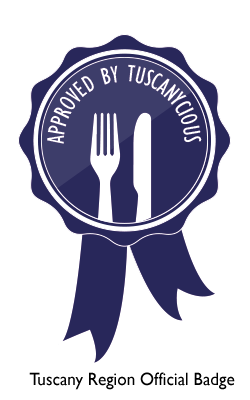Today I want to share with you the recipe of what we ate yesterday. In Italy, the day after Easter is called “Pasquetta” and it is usually spent in the open air with family and friends. People have picnics in the city parks or go to the seaside or mountains for a day of fun surrounded by nature. During these picnics, we usually eat a lot! And today I am going to show you how to make one of the most traditional “Pasquetta” dishes: casatiello. It is a sort of savoury bread from the region of Campania and it is filled with salami and lots of cheese (actually the name derives from the term “caso”, that means cheese in Naples). It is in the shape of a doughnut to symbolise the crown of thorns that was placed on Jesus Christ before his crucifixion. Another interesting fact is that raw eggs (a symbol of spring) are cooked with it (they actually become boiled eggs after the casatiello is ready) and they are secured to the top of the bread with crosses of dough (another clear religious symbol). Symbols apart, it looks pretty and it is DELICIOUS. Today’s post is also part of my series of Regional Italian dishes for Campania. Enjoy!
Ingredients (for a 20 cm – 8 inches bundt pan):
500 gms – 1.1 lbs flour
250 ml – 1 cup lukewarm water
7 gms – ¼ oz. dry yeast (1 sachet)
100 gms – 3.5 oz. lard
200 gms – 7 oz. salami, cubed
200 gms – 7 oz. provolone (or provola, scamorza, Asiago…), cubed
50 gms – 1.75 oz. Pecorino Romano, finely grated
4 eggs (I used 2)
1 tsp salt
1 tbsp pepper
Extra virgin olive oil
Put the yeast in the lukewarm water and set aside to activate. In the meantime put the flour, salt, pepper and lard in a mixer with a dough hook. When the yeast mixture is frothy, pour it into the mixer. Knead for a couple of minutes, till the dough looks smooth. If you do not have a mixer, you can knead all the ingredients by hand for 5 to 10 minutes. Make a ball with the kneaded dough, spray it with some oil and set it aside in a large bowl covered with cling wrap to rise for at least 1 hour or until it doubles in volume.
When ready (1), remove a little piece of dough that you will need to attach the eggs on the top of the casatiello. Flatten the remaining dough into a 1 cm – 0.4 inches thick rectangle (you can do it by hand or with a rolling pin). The length of the longest side should be equal to the circumference of the bundt pan (2). Sprinkle it with the grated Pecorino Romano and the cubed salami and provolone (3). Roll it tight along the longest side, the same way you would roll a Swiss roll. Put it in a greased bundt pan and press the edges together to close them (4). Thoroughly wash and dry the eggs (5). Press them gently on the top and secure them to the casatiello with 2 strips of dough each. Cover it and let it proof for at least 3 hours in a warm place.
Brush with some lard or extra virgin olive oil (6) and bake in a pre heated oven at 180°C – 350°F for 1 hour.
It can be eaten warm or at room temperature! Slice it and enjoy it with your family and friends.
Happy Pasquetta everyone!























The Italians know how to celebrate Easter and a half! This looks incredible, Manu.
Those Italians think of interesting things….. this looks incredible
Another wonderful recipe from your collection! You know, I could just use your blog as my cookbook!
There is something that we have in common, we eat a lot, specially during holidays.
A utilização de banha de porco na massa do pão, é algo maravilhoso, pois resgata as antigas receitas, onde a gordura animal é a base do pão. A obsessão por conta do colesterol, levou a panificação a gorduras vegetais de sabor duvidoso. Adorei sua receita, que faz parte da tradição italiana.
Beautiful dish… Love how it looks so simple & gorgeous on the outside and holds all that delicious stuff inside! Lovely, Manu!
Salami and cheese?! I think I gained 5 lbs just looking at this, but I love it!! 🙂
Wow – this is stunning! And looks delicious too. I’d never heard of it before, and I’ve never seen eggs cooked like that – what a fantastic dish – and really interesting background – thanks!
Wow, this is amazing – I’ve never seen a bread made in a bundt pan like this before…beautiful. I just discovered your blog via Lizzy’s That Skinny Chick Can Bake blog and I’m glad I did. It’s always fun to meet foodies and I’ve added your blog to my subscriptions list…
Manu, this is a fantastic post. I ALWAYS learn something interesting when I visit your blog. I will try this bread. 🙂 I’ll need my fingers crossed as well as the eggs. lol
I’m very much enjoying your web site. You are my kind of cook!